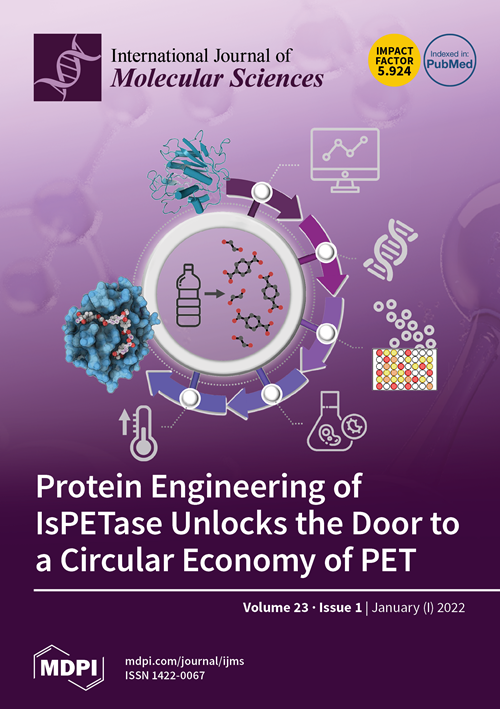带钉肽环化技术的比较分析:SARS-CoV-2 Spike RBD/hACE2 模型系统中蛋白质与蛋白质相互作用的结构洞察力
IF 4.9
2区 生物学
Q1 BIOCHEMISTRY & MOLECULAR BIOLOGY
引用次数: 0
摘要
药物化学一直在寻找新的方法来开发更有效、更有针对性的治疗分子。设计拟肽化合物是一种前景广阔的新兴策略,旨在开发能模拟或调节蛋白质生物活性的多肽。其中,钉书针肽因其稳定高频螺旋图案的独特能力而脱颖而出,但一直未得到系统报道。在这里,我们利用化学上不同的螺旋诱导 i, i + 4 约束--内酰胺、碳氢化合物、三唑、双三唑和硫醚--对来自 hACE2 N 端肽酶结构域的两个不同的短序列进行结构表征和硅丙氨酸扫描。我们的总体目标是利用圆二色性(CD)和核磁共振(NMR)光谱对α-螺旋诱导钉书钉进行与序列无关的比较。我们发现了一种源自 hACE2 序列(His34-Gln42)的 9 聚体内酰胺钉书钉肽,它能达到 55% 的最大螺旋度,在基于生物报告器和伪病毒的抑制试验中具有抗病毒活性。据我们所知,这项研究是首次对几种环化方法进行比较的全面调查,目的是利用高度局部模型系统(即 SARS-CoV-2 Spike RBD 与 hACE2 的相互作用)生成钉肽并将其二级结构与 PPI 抑制作用联系起来。本文章由计算机程序翻译,如有差异,请以英文原文为准。
Comparative Analysis of Cyclization Techniques in Stapled Peptides: Structural Insights into Protein–Protein Interactions in a SARS-CoV-2 Spike RBD/hACE2 Model System
Medicinal chemistry is constantly searching for new approaches to develop more effective and targeted therapeutic molecules. The design of peptidomimetics is a promising emerging strategy that is aimed at developing peptides that mimic or modulate the biological activity of proteins. Among these, stapled peptides stand out for their unique ability to stabilize highly frequent helical motifs, but they have failed to be systematically reported. Here, we exploit chemically diverse helix-inducing i, i + 4 constraints—lactam, hydrocarbon, triazole, double triazole and thioether—on two distinct short sequences derived from the N-terminal peptidase domain of hACE2 upon structural characterization and in silico alanine scan. Our overall objective was to provide a sequence-independent comparison of α-helix-inducing staples using circular dichroism (CD) and nuclear magnetic resonance (NMR) spectroscopy. We identified a 9-mer lactam stapled peptide derived from the hACE2 sequence (His34-Gln42) capable of reaching its maximal helicity of 55% with antiviral activity in bioreporter- and pseudovirus-based inhibition assays. To the best of our knowledge, this study is the first comprehensive investigation comparing several cyclization methods with the goal of generating stapled peptides and correlating their secondary structures with PPI inhibitions using a highly topical model system (i.e., the interaction of SARS-CoV-2 Spike RBD with hACE2).
求助全文
通过发布文献求助,成功后即可免费获取论文全文。
去求助
来源期刊

International Journal of Molecular Sciences
Chemistry-Organic Chemistry
CiteScore
8.10
自引率
10.70%
发文量
13472
审稿时长
17.49 days
期刊介绍:
The International Journal of Molecular Sciences (ISSN 1422-0067) provides an advanced forum for chemistry, molecular physics (chemical physics and physical chemistry) and molecular biology. It publishes research articles, reviews, communications and short notes. Our aim is to encourage scientists to publish their theoretical and experimental results in as much detail as possible. Therefore, there is no restriction on the length of the papers or the number of electronics supplementary files. For articles with computational results, the full experimental details must be provided so that the results can be reproduced. Electronic files regarding the full details of the calculation and experimental procedure, if unable to be published in a normal way, can be deposited as supplementary material (including animated pictures, videos, interactive Excel sheets, software executables and others).
 求助内容:
求助内容: 应助结果提醒方式:
应助结果提醒方式:


